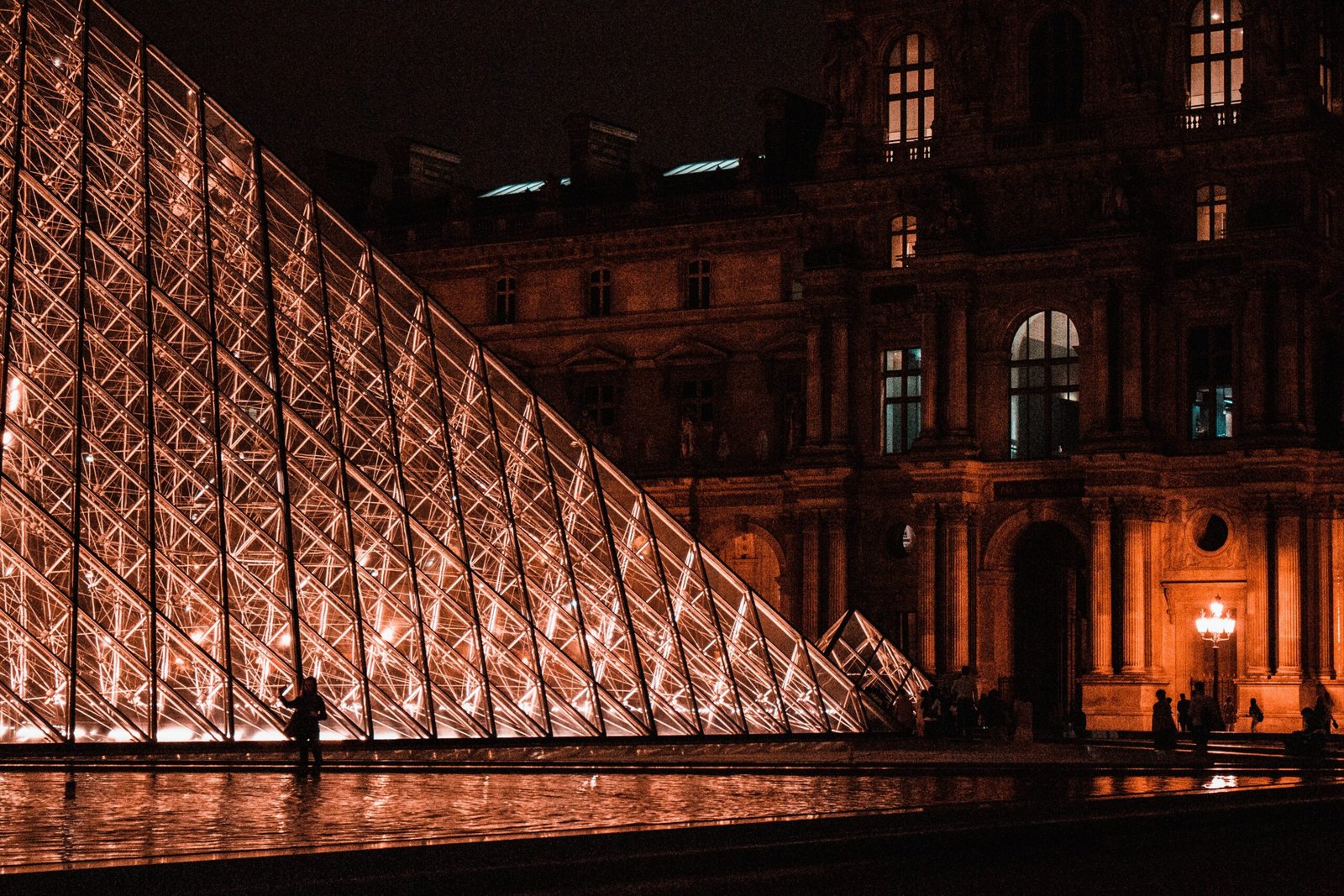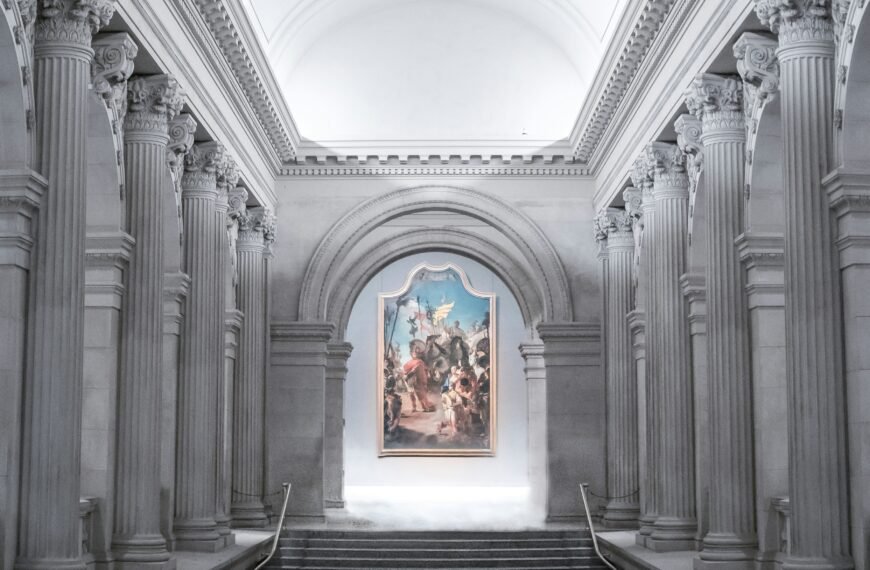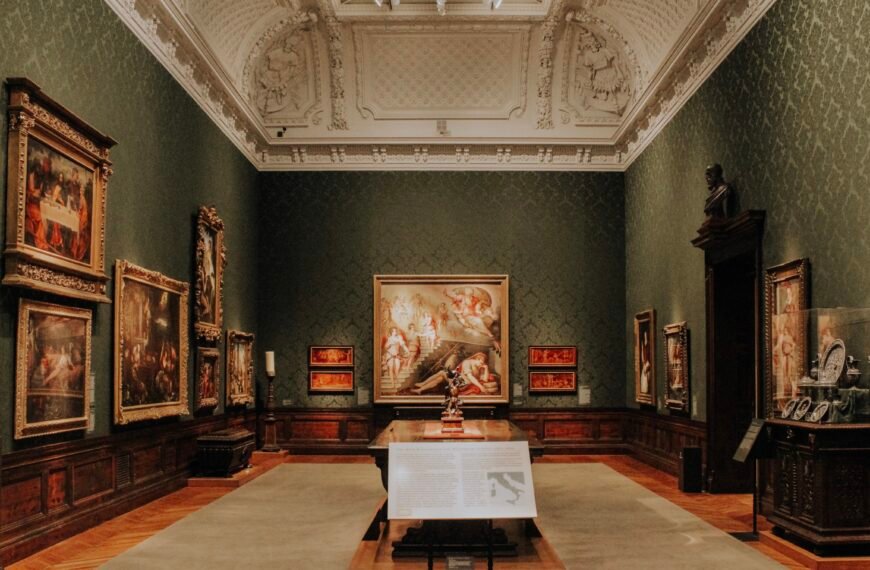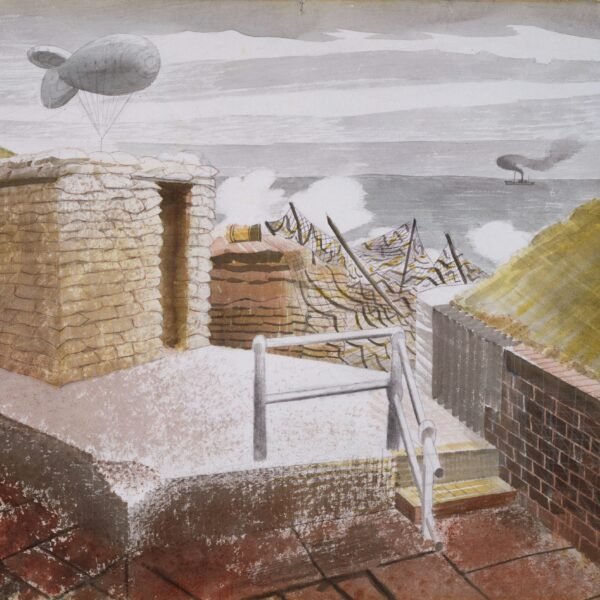Imagine walking through the halls of a majestic building, surrounded by breathtaking masterpieces that span centuries of creativity. You find yourself in awe of the artistic wonders that lie before you, eagerly soaking in the vibrant colors, intricate brushstrokes, and powerful emotions captured on each canvas. As you navigate through the endless corridors, you can’t help but wonder: what is the largest art museum in the world?
Introduction
If you’re a fan of art, there’s nothing quite like visiting a world-class museum to indulge in the beauty and creativity of centuries-old masterpieces. With their extensive collections and rich historical backgrounds, art museums offer a unique window into the cultural heritage of a country or region. From ancient artifacts to contemporary works, these institutions provide a haven for art enthusiasts seeking inspiration and enlightenment. In this article, we will explore the top art museums around the world, delving into their historical backgrounds, notable art collections, and visitor information. Whether you’re planning your next trip or simply want to expand your knowledge, get ready to embark on a virtual tour of some of the most remarkable art museums that grace our planet.
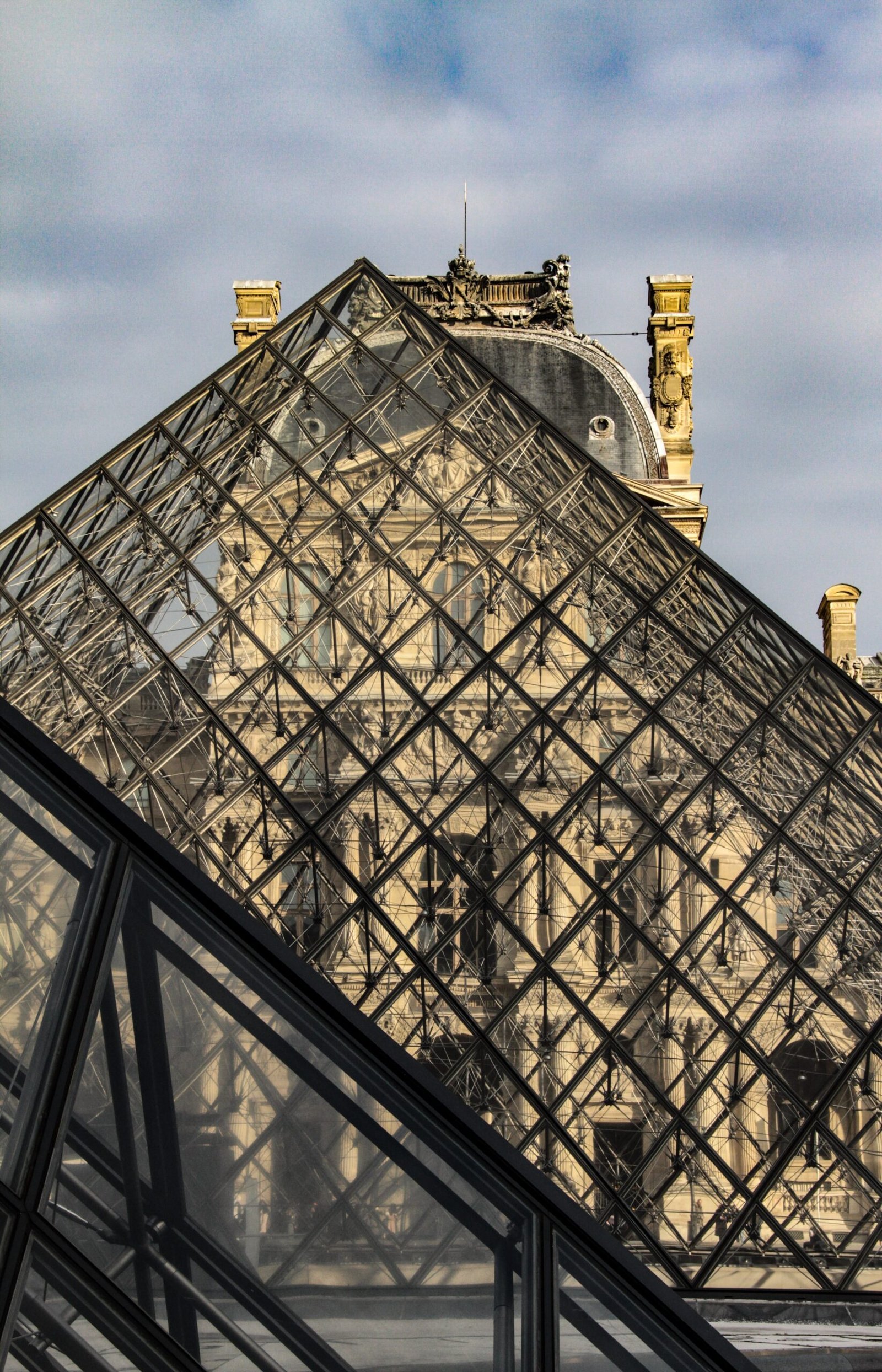
Top Art Museums around the World
Louvre Museum
Undoubtedly one of the most iconic art museums in the world, the Louvre Museum in Paris, France, stands as a testament to artistic expertise and historical significance. Its impressive historical background dates back to the late 12th century when it was initially constructed as a fortress, eventually transforming into a royal palace. Today, the Louvre houses an extensive collection that spans over 9,000 years of art history, showcasing masterpieces from various civilizations and periods.
Some of the Louvre’s notable artworks include Leonardo da Vinci’s enigmatic “Mona Lisa,” the iconic statue of Nike, also known as the “Winged Victory of Samothrace,” and the renowned painting of the French Revolution, “Liberty Leading the People” by Eugène Delacroix. With over 38,000 objects on display, including ancient Egyptian artifacts, Greek and Roman sculptures, and European paintings, a visit to the Louvre promises an awe-inspiring journey through the realms of human creativity.
If you’re planning to visit the Louvre, it’s important to note that the museum can get quite crowded, especially during peak tourist seasons. To make the most of your visit, consider purchasing tickets online in advance and arriving early in the day. With its central location in Paris, the Louvre Museum is easily accessible by public transportation, ensuring a seamless exploration of its captivating galleries and exhibitions.
State Hermitage Museum
Located in Saint Petersburg, Russia, the State Hermitage Museum boasts an extensive collection of art and artifacts, making it one of the largest and oldest museums in the world. Its historical background dates back to 1764 when Empress Catherine the Great founded the Hermitage with the acquisition of a collection of paintings. Over the years, the museum expanded its holdings to include works from various periods, cultures, and artistic movements.
The State Hermitage Museum’s art collections are truly diverse, encompassing pieces from ancient Egypt, classical antiquity, Western European art, and Russian art. Visitors can marvel at renowned works by artists such as Rembrandt, Leonardo da Vinci, and Vincent van Gogh. Notable artworks within the museum include the famous “Madonna Litta” by Leonardo da Vinci and “Boulevard Montmartre at Night” by Camille Pissarro.
When planning a visit to the State Hermitage Museum, be prepared for the sheer scale of its collection. With over three million items available for public viewing, it’s advisable to create a list of must-see artworks or join guided tours to navigate the vast museum efficiently. Don’t forget to check the museum’s website for any temporary exhibitions or special events that might enhance your visit.
Prado Museum
Situated in Madrid, Spain, the Prado Museum stands as one of the world’s most important art museums, specializing in European art from the 12th to the early 20th century. Its historical background traces back to 1785 when King Charles III of Spain initiated the idea of establishing a Royal Museum. Today, the Prado Museum houses an exceptional collection of Spanish, Italian, Flemish, and other European masterpieces.
The museum’s art collections showcase renowned works by Spanish artists such as Velázquez, Goya, and El Greco. Visitors can admire “Las Meninas” by Diego Velázquez, a masterpiece revered for its composition and depth. Another highlight includes Francisco de Goya’s haunting paintings, such as “The Third of May 1808” and “Saturn Devouring His Son.”
To make the most of your visit to the Prado Museum, take advantage of the audio guides or join a guided tour to gain deeper insights into the artworks. Plan your visit strategically, as the museum can get crowded, especially during weekends and holidays. Additionally, remember that photography is not allowed in certain areas of the museum, so be sure to respect the guidelines to preserve the artworks for future generations.
National Museum of China
Located in Beijing, the National Museum of China holds immense cultural and historical significance, being one of the largest museums in the world. The museum’s historical background can be traced back to the foundation of the Beijing Museum of Chinese History and the Museum of the Chinese Revolution in the early 20th century. In 2003, the two institutions merged to form the National Museum of China, boasting a comprehensive collection that showcases China’s rich cultural heritage.
The National Museum of China’s art collections span a wide range of artifacts, including ancient bronzes, ceramics, calligraphy, paintings, and religious relics. Notable artworks within the museum include delicate Tang Dynasty pottery, exquisite Ming Dynasty porcelain, and ancient Buddhist sculptures. These treasures provide visitors with a glimpse into the diverse artistic traditions and historical narratives that have shaped Chinese culture.
When planning a visit to the National Museum of China, set aside enough time to fully explore its extensive collection. Due to its immense size, it’s advisable to prioritize the galleries or exhibitions that align with your specific interests. The museum offers guided tours and audio guides to enhance visitors’ understanding of the artworks and the historical context in which they were created.
Metropolitan Museum of Art
Nestled in the heart of New York City, the Metropolitan Museum of Art, also known as the Met, is a cultural landmark that showcases art from around the world. Its historical background dates back to 1870, when a group of American citizens and businessmen sought to establish an institution that would bring art and culture to the United States. Today, the Met houses an expansive collection that spans over 5,000 years of human history.
The museum’s art collections encompass artworks from various civilizations, including ancient Egypt, Greece, Rome, and Asia. Visitors can marvel at masterpieces such as the imposing Temple of Dendur, the iconic “Washington Crossing the Delaware” by Emanuel Leutze, and the awe-inspiring European paintings in the Lehman Collection. With over two million works of art on display, the Met offers a diverse range of artistic expressions for visitors to enjoy.
To make the most of your visit to the Metropolitan Museum of Art, plan your itinerary in advance as the museum can be overwhelming due to its vast size. Consider exploring different sections of the museum over multiple visits to fully appreciate its breadth and depth. The Met offers audio guides, docent-led tours, and interactive workshops, ensuring an immersive and educational experience for visitors of all ages.
British Museum
Located in London, England, the British Museum is renowned for its vast collection of art and artifacts from civilizations across the globe. With a historical background dating back to 1753, the museum was established to house the extensive collection of Sir Hans Sloane. Over the centuries, the British Museum steadily expanded its holdings through acquisitions, donations, and archaeological excavations.
The museum’s art collections cover a wide range of cultures and periods, including ancient Egypt, Greece, Rome, and Assyria. Notable artworks within the British Museum include the Rosetta Stone, which played a key role in deciphering Egyptian hieroglyphs, and the Elgin Marbles, a collection of classical Greek sculptures. These iconic pieces stand as testaments to human creativity, craftsmanship, and historical significance.
When visiting the British Museum, consider joining one of the many guided tours or thematic routes to make the most of your time. The museum’s vastness can be overwhelming, so having a plan can help navigate the extensive galleries. Additionally, keep in mind that admission to the British Museum is free, making it a popular attraction for both locals and tourists.
Vatican Museums
Situated within the walls of the Vatican City in Rome, Italy, the Vatican Museums hold invaluable treasures of art and history, encompassing a vast collection accumulated by successive Popes over centuries. The historical background of the Vatican Museums can be traced back to the establishment of the Sculpture Museum by Pope Julius II in the 16th century. Today, the museum complex houses an unparalleled collection of artistic masterpieces.
The Vatican Museums’ art collections showcase works from various periods and cultures, including ancient Egyptian, Roman, and Renaissance art. Notable artworks within the museum include Michelangelo’s iconic frescoes in the Sistine Chapel, Raphael’s “School of Athens,” and the Laocoön sculpture. These magnificent pieces reflect the Vatican’s commitment to preserving and promoting art that transcends time and inspires the faithful.
When planning a visit to the Vatican Museums, it’s crucial to book tickets in advance due to the high demand. Consider arriving early in the morning or opting for a guided tour to bypass long queues and gain a deeper understanding of the artworks and their historical context. Additionally, be mindful of the museum’s strict dress code, as entry may be denied to those who do not adhere to the guidelines.
Berlin State Museums
Berlin, Germany, is home to a remarkable array of museums collectively known as the Berlin State Museums. Comprising several institutions, including the Altes Museum, Neues Museum, and Pergamon Museum, these cultural havens showcase a vast range of art, artifacts, and historical collections. The historical background of the Berlin State Museums dates back to the 19th century when they were established to make art and culture accessible to the public.
The art collections within the Berlin State Museums cover a wide spectrum, including Egyptian, Greek, and Roman antiquities, as well as European paintings and sculptures. Visitors can admire the iconic bust of Nefertiti in the Neues Museum, marvel at the reconstructed Ishtar Gate in the Pergamon Museum, and explore a treasure trove of European art in the Gemäldegalerie. With each institution focusing on a specific era or theme, a visit to the Berlin State Museums promises an immersive exploration of diverse artistic traditions.
To make the most of your visit to the Berlin State Museums, consider purchasing a Museum Island Pass, allowing access to multiple museums on Berlin’s Museum Island. With limited time, prioritize the museums or exhibitions that align with your interests. Additionally, the museums offer audio guides and guided tours in various languages, enhancing visitors’ understanding of the artworks and historical context.
National Gallery of Art
Washington, D.C., is home to the National Gallery of Art, a prestigious institution that showcases an impressive collection of American and European art. Established in 1937, the National Gallery of Art was envisioned as a public museum that would house and enrich the nation’s art and cultural heritage. Today, the museum stands as a testament to this vision, offering visitors an extensive array of art from various periods and movements.
The National Gallery of Art’s collections encompass European paintings, sculptures, prints, and decorative arts spanning from the Middle Ages to the present day. Visitors can admire works by iconic artists such as Leonardo da Vinci, Vincent van Gogh, and Claude Monet. Notable artworks within the museum include Leonardo da Vinci’s exquisite portrait, “Ginevra de’ Benci,” and Johannes Vermeer’s luminous masterpiece, “Woman Holding a Balance.”
When planning a visit to the National Gallery of Art, take advantage of the museum’s free admission policy. This allows visitors to experience the riches of the collection without any financial constraints. With its central location on the National Mall, the museum is easily accessible, making it a must-visit destination for art enthusiasts and history buffs in the nation’s capital.
Tokyo National Museum
Nestled in Tokyo, Japan, the Tokyo National Museum stands as a premier institution dedicated to preserving and exhibiting Japan’s cultural heritage. Established in 1872, the museum has continually expanded its collections and expertise, encompassing a wide range of art, archaeological artifacts, and cultural artifacts. With its historical background deeply rooted in Japanese culture, the Tokyo National Museum offers a comprehensive understanding of the country’s artistic traditions.
The museum’s art collections showcase Japanese artwork from various periods such as ancient Japan, medieval Japan, and the Edo period. Visitors can marvel at delicate Buddhist sculptures, admire vibrant folding screens, and explore intricately designed samurai armor. Notable artworks within the Tokyo National Museum include the “Byodo-in Amida Nyorai” statue, an iconic example of Buddhist sculpture, and “Irises” by Ogata Kōrin, a masterpiece of Rinpa school painting.
When planning a visit to the Tokyo National Museum, allocate enough time to explore the galleries and immerse yourself in the richness of Japanese art and culture. The museum offers audio guides in several languages, enhancing visitors’ understanding of the artworks on display. With its tranquil surroundings and beautifully landscaped gardens, the Tokyo National Museum provides a serene oasis for reflection and appreciation.
In conclusion, the world is blessed with an abundance of remarkable art museums that house breathtaking collections from various periods, cultures, and artistic movements. Whether you find yourself in the Louvre Museum gazing at the enigmatic smile of the Mona Lisa or in the Vatican Museums captivated by Michelangelo’s divine ceiling frescoes, each art museum offers a unique journey into the realm of human creativity. So, next time you find yourself planning a trip or seeking inspiration, remember the vast array of art museums awaiting your visit. It’s time to embark on a cultural adventure, exploring the masterpieces that have shaped our world and continue to inspire generations.


